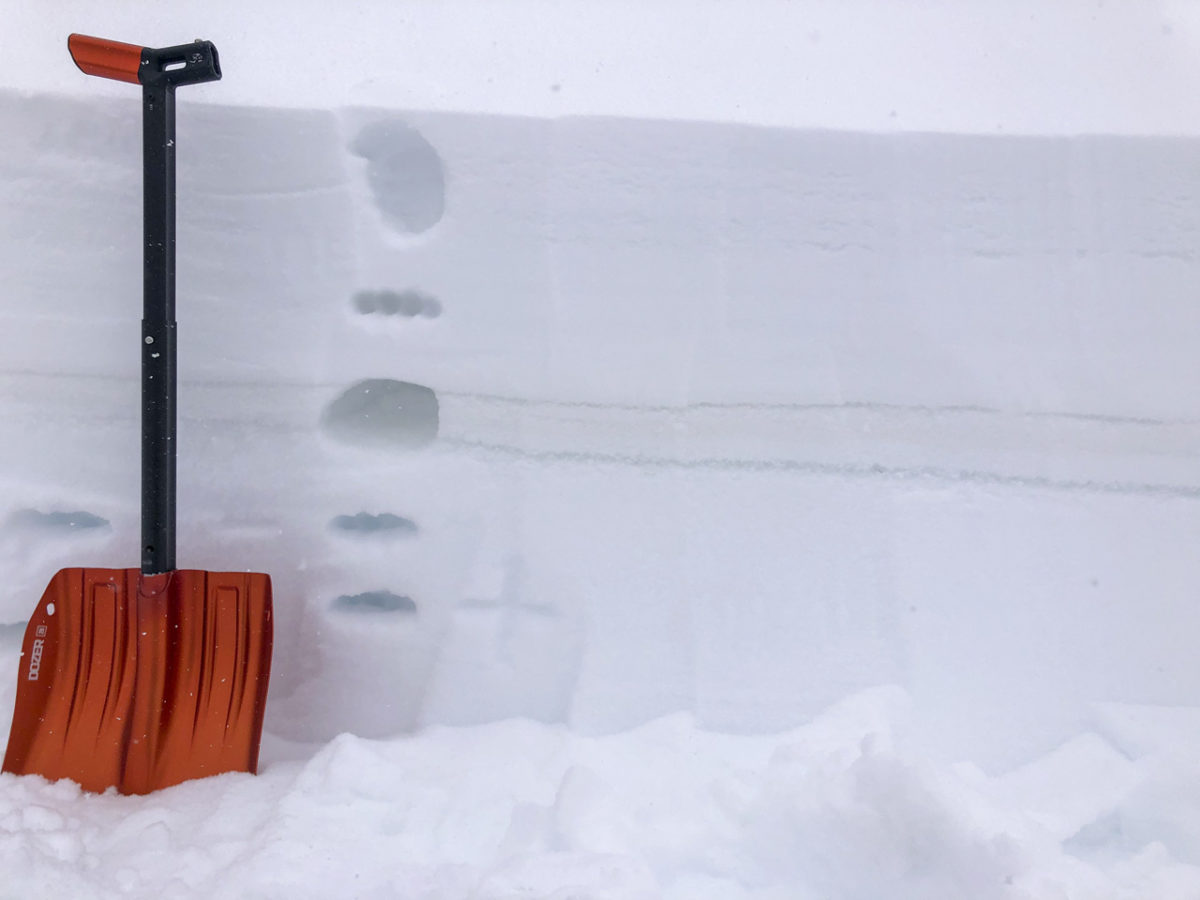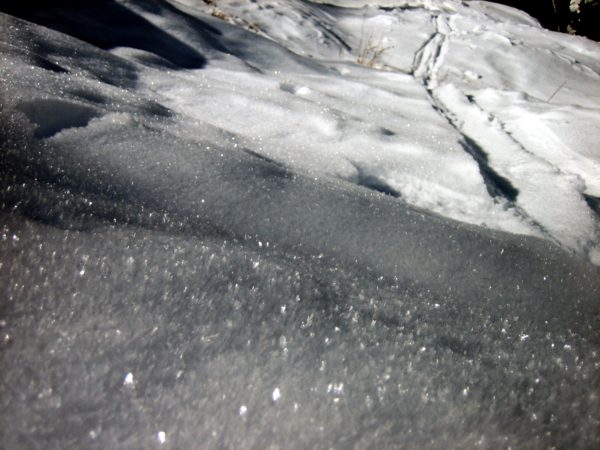The mechanical flaw responsible for slab avalanche failures.

A layer of relatively weak snow sandwiched between layers of stronger snow. Credit: Sawtooth Avalanche Center
Weak layers are stratigraphic layers in the snowpack that have relatively less strength than surrounding layers. A slab avalanche occurs when a weak layer collapses and fractures under the weight of an overlying slab. Weak layers come in a variety of grain types and sizes, form under a variety of conditions, and can be transient or long-lived. Understanding the spatial distribution and sensitivity of weak layers in the snowpack is key to managing slab avalanche hazards.



